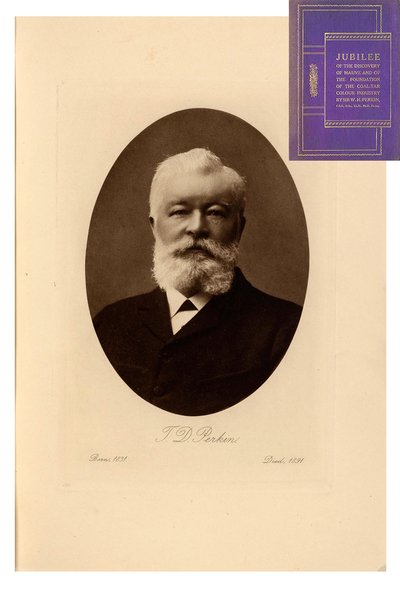Mauve
Organic chemists produced the first synthetic colors while experimenting with coal-tar an industrial by-product of the production of coke from soft coal. One of the first and certainly most well known synthetic dyes was a purple derived from aniline, a coal-tar extract. Eighteen year old British chemist William Perkins discovered it while working as an assistant to A.W. Hofmann, the director of the Royal College of Chemistry. Perkin created the purple aniline dye in a failed attempt to synthesize the anti-malarial drug quinine from coal-tar hydrocarbons. In 1856 he applied for a patent, withdrew from the Royal College of Chmistry and entered in the dye industry. He first marketed the dye as “Tyrian purple” but it quickly adopted the name mauve.
As I look out of my window, the apotheosis of Perkin’s purple seems at hand—purple hands wave from open carriages—purple hands shake each other at doors—purple hands threaten each other from opposite sides of the street; purple—striped gowns cram barouches, jam up cabs, throng streamers, fill railway stations: all flying countryward, like so many migrating birds of purple Paradise.
-Charles Dickens All the year round, September 1959, quoted in Garfield, Mauve, p.67

